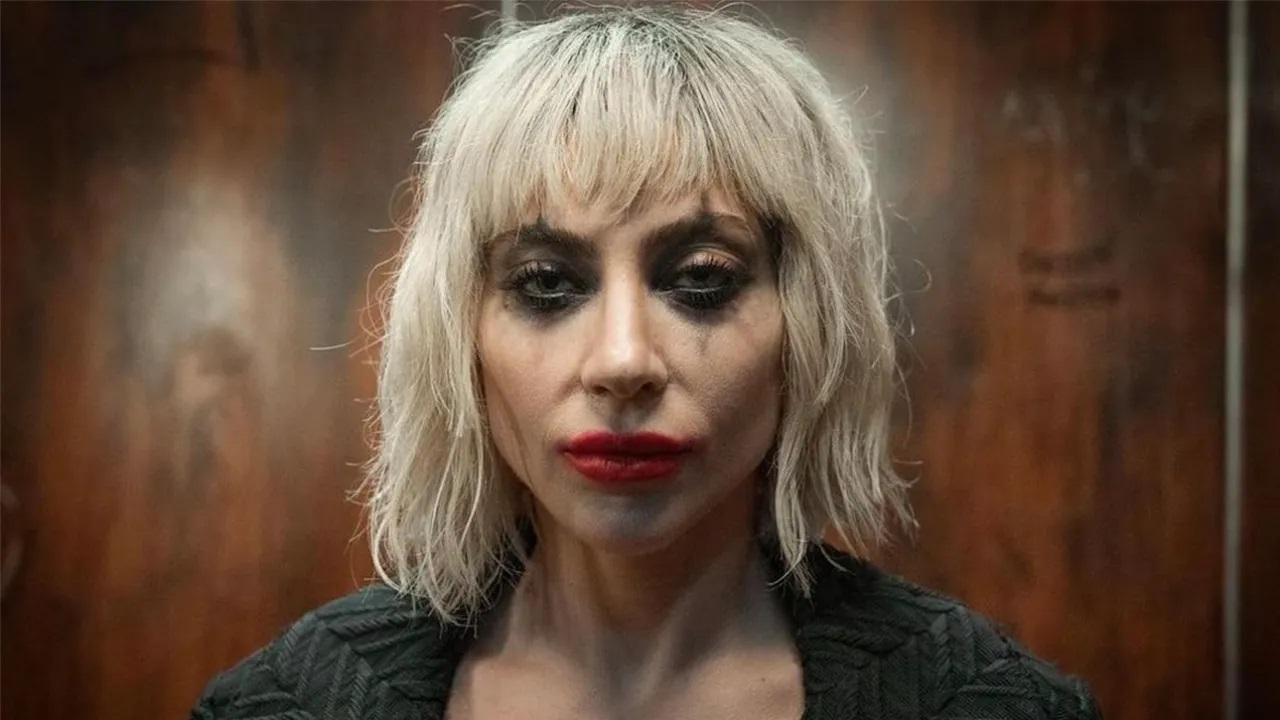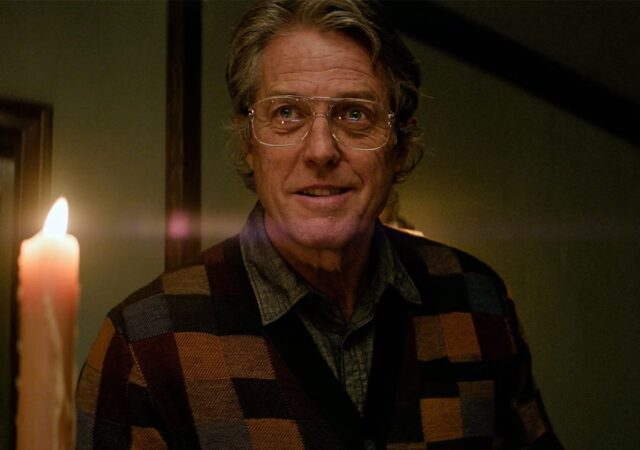Five years after the release of Joker, Todd Phillips returns with Joker: Folie à Deux, a musical sequel that attempts to elevate the original’s dark psychological drama into something more abstract and theatrical. The film reunites audiences with Arthur Fleck, portrayed once again by Joaquin Phoenix, whose transformation into the infamous Joker in 2019’s film left a lasting impact. However, rather than retracing the same steps, Folie à Deux takes a bold, experimental approach by incorporating musical elements and introducing a new character, Harley Quinn, played by Lady Gaga.
With a concept that could have potentially redefined what a comic book adaptation could be, Folie à Deux unfortunately falters in execution. Despite a few moments of brilliance, it struggles to balance its themes, often feeling like a muddled mix of genres that never fully gels. The result is a film that feels more like a missed opportunity than a triumphant follow-up.

At the heart of Folie à Deux is the relationship between Arthur Fleck and Harley Quinn, whose shared madness drives much of the film’s narrative. Harley, introduced as Harleen Quinzel, is not yet the full-fledged villain fans of the comics might expect.
Instead, she is portrayed as a starstruck admirer of the Joker, fascinated by his public persona. Gaga’s performance as Harley Quinn is more restrained than her previous roles, playing the character with a quiet intensity rather than the chaotic energy associated with her.
This version of Harley is a far cry from the lively, firecracker character seen in other DC Comics adaptations. Gaga plays her as a woman whose obsession with the Joker gives her purpose, but her development remains somewhat shallow throughout the film.
While there’s an interesting dynamic in how Arthur and Harley interact, it lacks the depth needed to make their relationship feel truly compelling.
The chemistry between Phoenix and Gaga is palpable in moments, but the film doesn’t spend enough time exploring their bond in any meaningful way, leaving the romance feeling more like a subplot than the core of the story.

The musical sequences, which are central to the film’s marketing, are hit or miss. Joker: Folie à Deux isn’t a traditional musical where the songs drive the narrative forward. Instead, the musical numbers feel more like emotional interludes that offer glimpses into the characters’ minds.
In one of the standout scenes, Arthur imagines himself in a variety-show setting, performing the Bee Gees’ “To Love Somebody” with Harley. This sequence is visually stunning, capturing the surreal quality of their relationship, but moments like this are few and far between.
While the first Joker focused on Arthur’s descent into madness and his violent rebellion against a society that rejected him, Folie à Deux is centered around Arthur’s trial, where district attorney Harvey Dent (Harry Lawtey) pushes for the death penalty. Arthur’s lawyer, Maryanne Stewart (Catherine Keener), attempts to argue that Joker and Arthur are two distinct personalities, a legal strategy that could save him from execution. This courtroom drama could have provided the foundation for an exploration of identity, guilt, and the consequences of Arthur’s actions. Instead, these scenes feel more like a narrative crutch, designed to rehash the themes of the first film without offering anything new.
The trial sequences drag on, robbing the film of its momentum. The exploration of Arthur’s duality—whether he is Joker or simply performing as the character—fails to delve deeper into his psychological state. It’s a concept that holds a lot of potential, especially in the context of how society perceives mental illness and violence, but the film doesn’t push the conversation forward. While Phoenix’s portrayal of Arthur remains compelling, even in the confines of a courtroom, the legal drama often feels flat and repetitive.

What’s more, Lawtey’s Harvey Dent, a key figure in Gotham City‘s legal world, feels underutilized. While his presence as a prosecutor could have added tension to the trial, the film barely gives him the screen time to develop into anything more than a one-dimensional character. The same goes for Keener’s Maryanne Stewart, who is introduced as a sharp and competent lawyer but is soon overshadowed by the film’s focus on Arthur and Harley.
One of the most anticipated elements of Folie à Deux was its musical aspect, but the execution leaves much to be desired. The film features a series of musical interludes, but they are largely subdued and restrained, lacking the vibrancy that could have elevated the narrative.
Gaga’s musical talents, while evident in certain scenes, are surprisingly underutilized. The film misses the opportunity to fully embrace its musical concept, which could have offered a more dynamic exploration of Arthur’s internal world.
A significant issue with the musical numbers is their lack of energy. They don’t quite capture the sense of escape or release that musicals often provide. Instead, they feel more like asides that interrupt the flow of the story rather than enhancing it. Songs like “For Once in My Life” and “That’s Entertainment” are woven into the narrative but lack the emotional resonance needed to make them stand out. The potential for these numbers to express Arthur’s fractured psyche or the complexity of his relationship with Harley is never fully realized.
There are, however, moments when the film briefly hits its stride. The aforementioned variety-show scene, with its vibrant colors and surreal atmosphere, offers a glimpse of what Folie à Deux could have been had it leaned further into its more avant-garde impulses. In this scene, Arthur and Harley revel in their shared madness, their chemistry electrifying. But just as quickly as the film embraces its musicality, it retreats into more grounded, less inspired storytelling.
Phoenix once again delivers a powerful performance as Arthur Fleck, a man torn between his identity as the Joker and his desire to be seen as something more. His portrayal of Arthur is just as raw and unsettling as in the first film, capturing the fragility of a man whose entire existence has been shaped by trauma and isolation. Phoenix’s physical transformation—his gaunt frame and haunted eyes—reflects the toll that Arthur’s inner turmoil has taken on him.
Despite Phoenix’s strong performance, Folie à Deux doesn’t offer much new material for him to work with. Arthur’s journey in this film feels like a rehash of the original Joker, with little evolution of the character.
The film hints at deeper themes of fame, identity, and the consequences of violence, but it never fully commits to exploring them in any meaningful way. As a result, Arthur’s arc feels stagnant, and by the film’s end, it’s hard to feel like he’s grown or changed in any significant way.

Lady Gaga, who plays Harley Quinn, brings a quieter, more vulnerable take on the character than previous interpretations. Gaga’s performance is nuanced and compelling, but she is largely relegated to the background for much of the film. Her character’s potential to bring a new dynamic to Arthur’s story is left unfulfilled, and the film misses the chance to explore the full range of Gaga’s talents.
Harley’s arc in Folie à Deux feels incomplete. While her obsession with Arthur and her descent into madness are central to the narrative, the film doesn’t give her enough screen time to develop into a fully realized character.
Gaga’s performance hints at a more complex, layered Harley, but the film’s focus on Arthur’s trial and internal struggles leaves her character feeling undercooked.
Joker: Folie à Deux is a film that strives to be bold and subversive but struggles to maintain its footing. Todd Phillips’ decision to turn the film into a musical was a risky move, but the execution falls short, with the musical numbers feeling more like interruptions than integral parts of the story. The relationship between Arthur and Harley, while intriguing, doesn’t get the depth it needs to fully resonate, and the courtroom drama that dominates the film lacks the tension and complexity to keep the audience engaged.

While Phoenix and Gaga deliver strong performances, Folie à Deux ultimately feels like a missed opportunity. It tries to break free from the confines of its predecessor, but in doing so, it loses the narrative momentum that made Joker so compelling.
For fans of the original, the film may offer moments of brilliance, but for those hoping for a deeper exploration of Arthur’s psyche or a more dynamic use of the musical format, Folie à Deux is likely to disappoint.
Joker: Folie à Deux is an ambitious but flawed sequel that struggles to live up to its potential. Despite strong performances from Joaquin Phoenix and Lady Gaga, the film’s disjointed narrative, lackluster musical numbers, and underdeveloped character arcs leave much to be desired. For all its bold ideas, Folie à Deux fails to deliver a compelling or cohesive story, making it a frustrating follow-up to one of the most controversial films of the last decade.






















